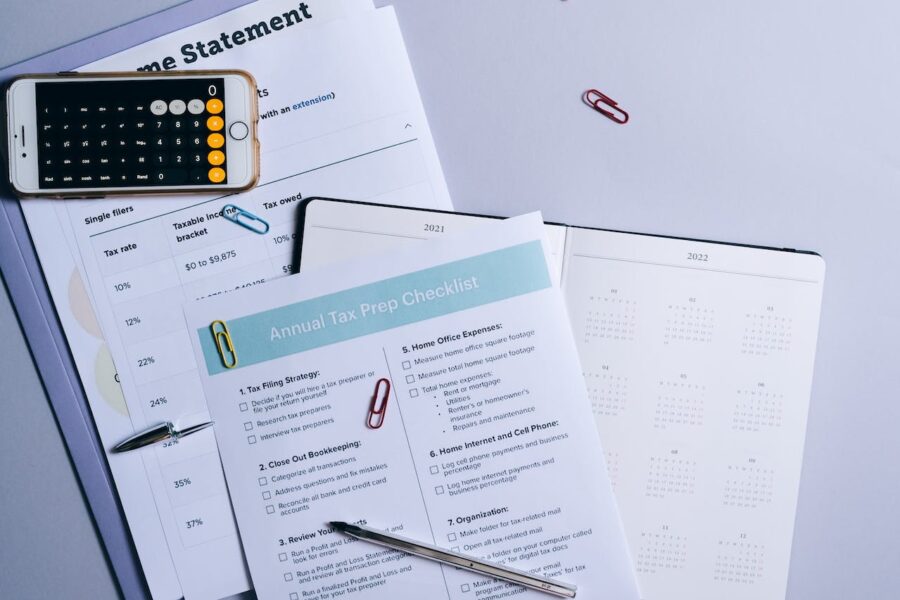
Many taxpayers rely on tax software or tax professionals to make sure we have the best result possible for tax filing. But you could be missing out on tax credits that could reduce your tax liability and increase your tax refund. In this article, we’ll cover some tax credits you may not have heard about before or haven’t considered using to maximum benefit.
1. Used Clean Vehicle Credit
Clean vehicle credits aren’t just for new vehicles anymore. Starting in 2023, if you buy a qualified used electric vehicle (EV) or fuel cell vehicle (FCV) from a licensed dealer for $25,000 or less, you may be qualified for the Used Clean Vehicle Credit. The credit equals 30% of the sale price up to a maximum credit of $4,000.
What makes this even better is that starting in 2024, you can receive the credit at the point of sale from the dealer.
For more information regarding the Used Clean Vehicle Credit, please read here.
New and Used Clean Vehicle Credit Hack
As long as you’re certain you qualify for the credit and your income for the year will be below the income limit, get the credit at the point of sale.
This ensures you receive the full credit even if your tax liability wouldn’t permit it when filing your tax return.
Explanation: This is not normally a refundable credit. This means if you don’t have enough tax liability for the credit, then you won’t be able to use the full credit on your tax return.
Example: Let’s say that before taking the credit into account, you should have paid $1000 for taxes for the year, and you happened to nail it and paid $1000 in taxes. So you don’t get a refund.
But you purchased a used clean vehicle for $20,000 so you’re eligible for the max $4000 credit for the purchase. With only $1000 of tax liability, you can only receive a $1000 refund. You lose out on the $3000, and it cannot carry over to another year.
(Note: if other credits use up your tax liability, you might not see a tax benefit from the purchase at all.)
Starting in 2024, there is a workaround, as long as you otherwise qualify for the credit. If you purchase the vehicle and receive the credit at the point of sale, then you get to keep the credit even if when filing your tax return, it shows you don’t have enough tax liability to cover the credit.
2. Retirement Savings Contribution Credit
Congress wants to encourage people to invest and save for retirement in retirement accounts. So they created the Retirement Savings Contribution Credit, also known as the Saver’s Credit, for low to middle-income taxpayers.
To be eligible, a taxpayer must be 18 or over, not claimed as a dependent on another person’s return, and not a student. The credit provides tax savings if the taxpayer contributes to a qualified retirement plan such as a 401K or an IRA. The maximum credit amount is $1000 or $2000 if married filing jointly.
How much credit you receive depends on how much you contribute to the retirement account and your income level. You can read more about the Saver’s Credit here.
3. Mortgage Interest Credit
Usually, when people think about the mortgage interest credit, they’re thinking about itemizing on a Schedule A or taking a deduction on a Schedule E for rental property.
But there is actually a credit related to mortgage interest that a small number of taxpayers can make use of. Often, these taxpayers would not be in a position to itemize, and the tax impact can be much better than including the interest in itemized deductions.
There is a catch. To use this credit, a taxpayer needs a Mortgage Credit Certificate (MCC) issued by a state or local government entity through a qualified program. The federal government offers states money for these programs and each state may operate them somewhat differently.
There are limits for taxpayer income, a participating lender is needed, and a qualified property in a qualified area is also needed. Typically, there are limits for how many individuals can participate in a program.
One great thing about this credit is that if the taxpayer doesn’t use up all the credit in one year, then it can carry over to the next year. You can find more information about the Mortgage Interest Credit here.
4. Adoption Credit
Anyone who has ever looked at the formal adoption process knows it can be very expensive and take quite a long time. The Adoption Credit can help offset costs.
The maximum credit for tax year 2023 is $15,950. There is a modified gross income (MAGI) phase out for this credit between $239,230 to $279,230. So once a taxpayer reaches an MAGI of $279,230 the credit is not available.
There are both qualified and unqualified expenses for this credit. In many cases the credit can be used when the adoption is not complete and in failed adoption attempts.
Additionally, unused credit can be carried over to later years for up to 5 years.
You can find more information on the Adoption Credit here.
5. Credit for Federal Tax Paid on Fuels
Most taxpayers are surprised by this one. The federal tax on gas and diesel is based on road use. The tax is embedded in the cost at the pump, so most of us don’t even think about it being there. The rate is 18.3 cents per gallon for gas and 24.3 cents per gallon for diesel fuel.
Personal use does not qualify for this credit. But some taxpayers with small businesses may qualify. For example, a landscaping business may purchase gas for trimmers, mowers, and other equipment. Other types of business operations or self-employment that might benefit from this credit include tree services and farms.
To use this credit, you have to track gallons of fuel bought and how the fuel is used. Why use this credit instead of just deducting the full expense of buying the gas? Because a tax credit is a $1 for $1 recovery of funds. A deduction just gets you a portion of the $1 recovered (or tax liability reduced). You can read more about this credit here.
6. Home Energy Credits
Starting in 2023, some home energy credit options for homeowners improved considerably.
The credit most taxpayers are familiar with is now called the Residential Clean Energy Credit. This includes a 30% tax credit for solar panels. While this credit can be helpful to purchase solar panel systems and other qualifying equipment, the overall cost of these systems is still higher than many taxpayers can bear.
The second big category is now called the Energy Efficient Home Improvement Credit. It includes items such as doors, windows, insulation materials, and certain HVAC systems. The rules are relatively complicated on these, and not all improvements qualify. Some items have an overall limit of $1200 for the credit each year while others max out at $2000. You can read more about home energy credits here.


